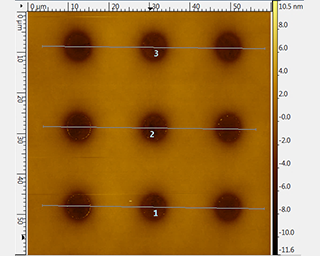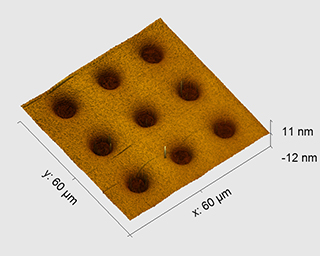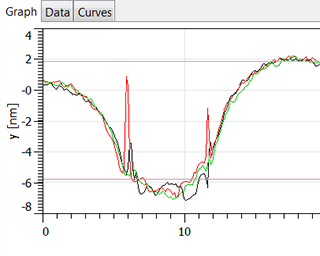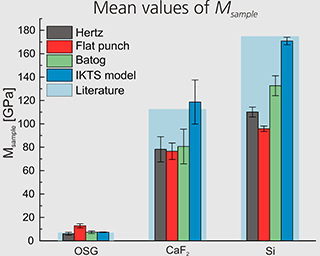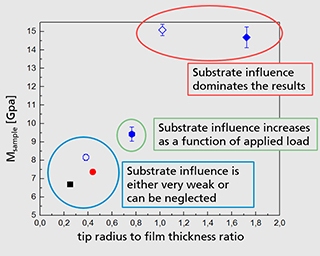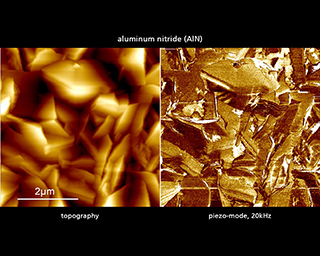Atomic force microscopy – AFM
With atomic force microscopy (AFM), Fraunhofer IKTS offers an imaging technique for high-resolution surface analysis. AFM can reach a lateral size of one to 90 micrometers, with a resolution in the nanometer range. This makes AFM an important tool in surface chemistry, surface mechanics and topography. Its purpose is to mechanically scan surfaces and measure atomic forces on the nanometer scale. The imaging technique is performed in contact mode and semi-contact mode. Both available AFM systems can also provide PFM (piezoresponse force microscopy) analyses of the magnetic and piezoelectric properties of surfaces. For instance, it is possible to analyze the structure size and the step height and surface roughness of 300 mm wafers.
